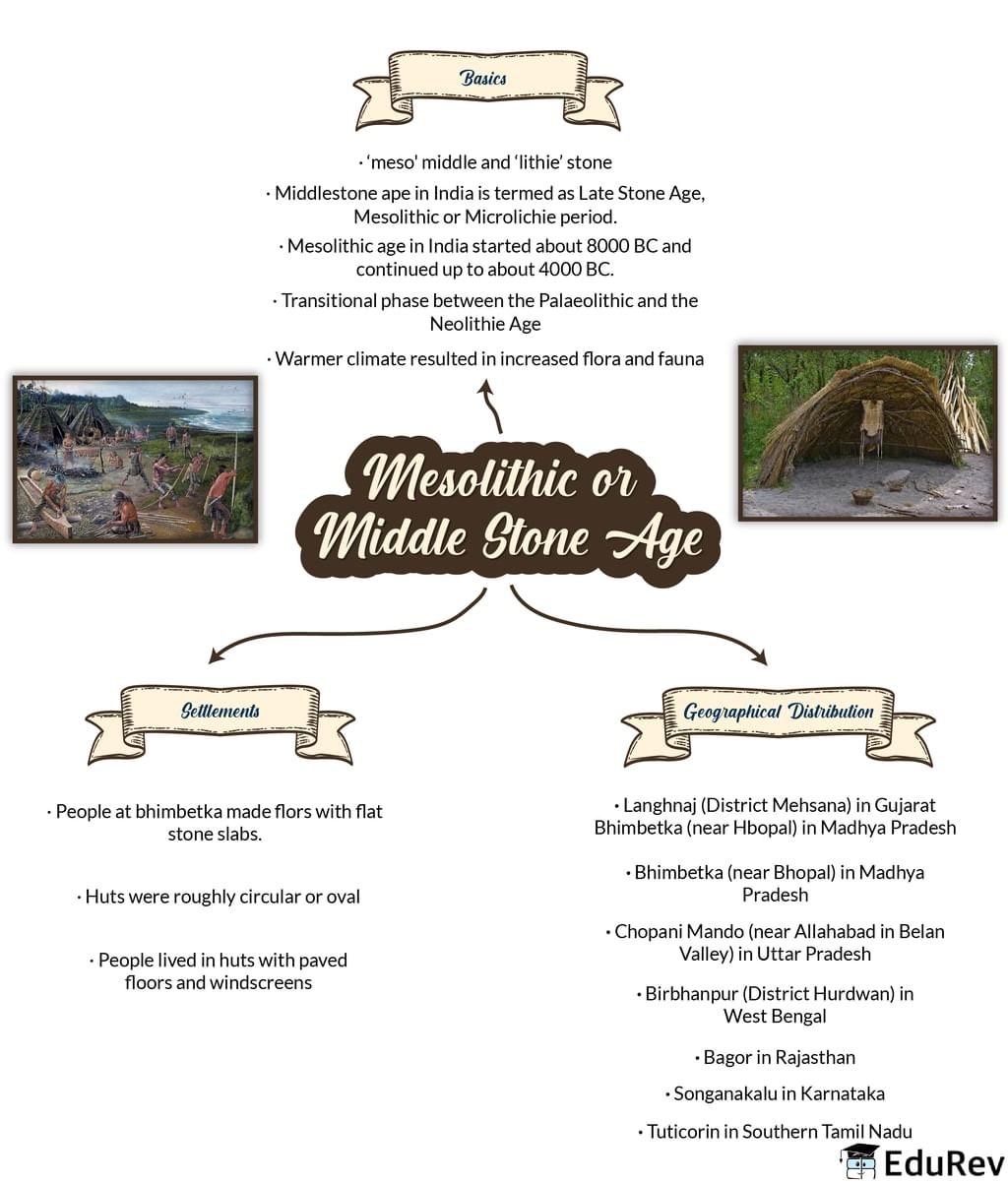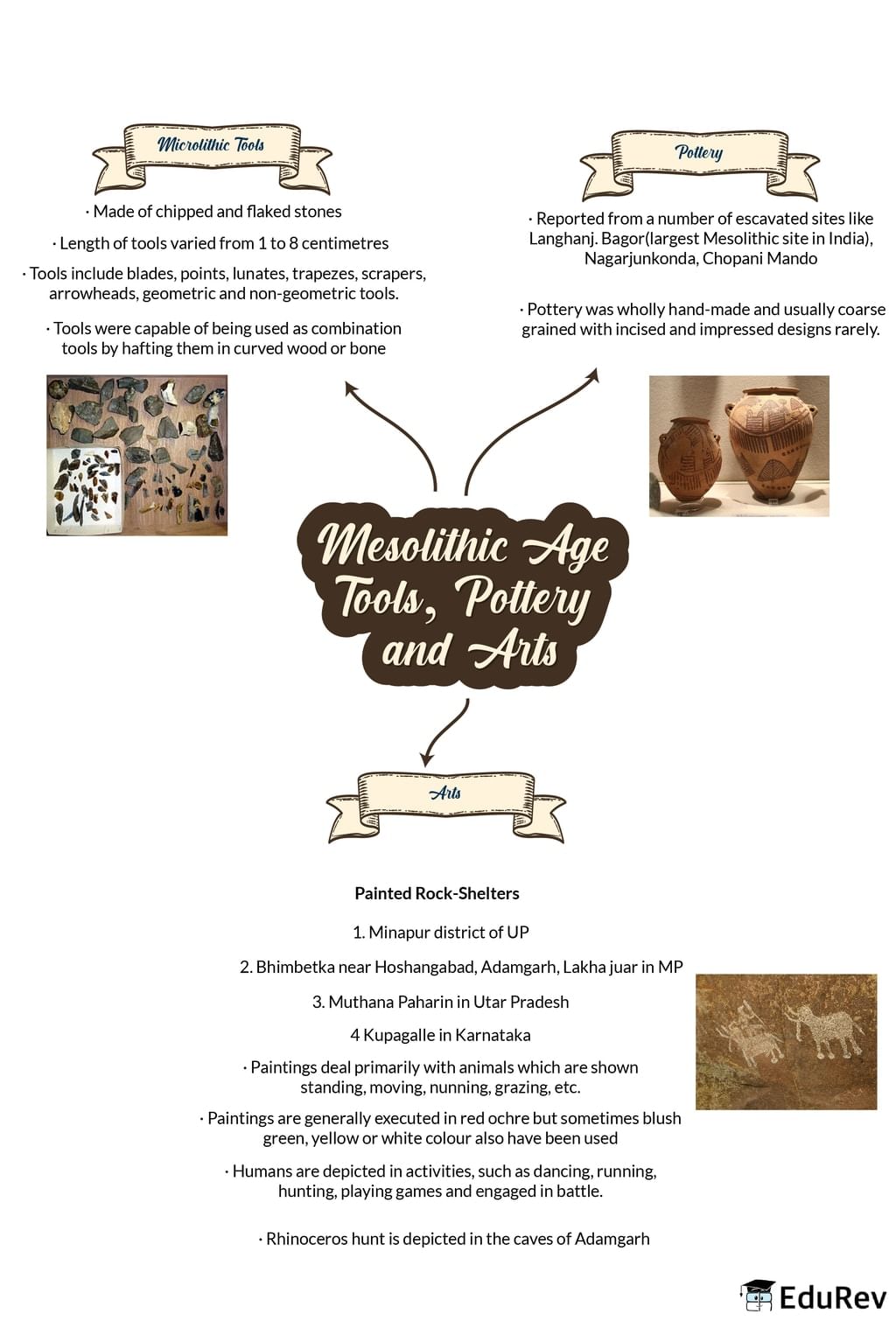UPSC Exam > UPSC Notes > Additional Study Material for UPSC > Mind Map: Mesolithic Age
Mind Map: Mesolithic Age | Additional Study Material for UPSC PDF Download



The document Mind Map: Mesolithic Age | Additional Study Material for UPSC is a part of the UPSC Course Additional Study Material for UPSC.
All you need of UPSC at this link: UPSC
|
21 videos|562 docs|160 tests
|
FAQs on Mind Map: Mesolithic Age - Additional Study Material for UPSC
| 1. What is the Mesolithic Age? |  |
Ans. The Mesolithic Age, also known as the Middle Stone Age, is a prehistoric period that occurred between the Paleolithic and Neolithic Ages. It is characterized by the development of new tools and technologies, including the invention of microliths and the use of bow and arrow. This age witnessed a transition from a nomadic lifestyle to more settled communities.
| 2. How long did the Mesolithic Age last? |  |
Ans. The Mesolithic Age lasted for approximately 5,000 to 10,000 years, depending on the region. It began around 10,000 BCE and ended around 4,000 BCE in many parts of the world. However, the duration may vary in different regions due to various factors such as geographic location and cultural developments.
| 3. What were the major advancements in the Mesolithic Age? |  |
Ans. The Mesolithic Age was marked by several significant advancements. Some of the major developments include the invention of microliths, small stone tools that were used for hunting and other activities. This period also saw the emergence of more sophisticated hunting techniques, such as the use of bow and arrow. Additionally, the Mesolithic people began to engage in fishing, gathering, and early forms of agriculture.
| 4. How did the Mesolithic Age contribute to human evolution? |  |
Ans. The Mesolithic Age played a crucial role in human evolution as it marked a significant transition in human lifestyle and technological advancements. The development of new tools and technologies, such as microliths and the use of bow and arrow, allowed for more efficient hunting and gathering. This, in turn, led to increased food production and a more settled way of life. The Mesolithic Age also witnessed the exploration and colonization of new territories, contributing to the expansion and diversification of human populations.
| 5. What are some notable Mesolithic archaeological sites in India? |  |
Ans. India is home to several notable Mesolithic archaeological sites. One such site is Bagor in Rajasthan, which is known for its rich assemblage of microliths, bone tools, and evidence of early agriculture. Another important site is Adamgarh in Madhya Pradesh, where rock shelters with paintings and engravings have been discovered. Bhimbetka, also in Madhya Pradesh, is another significant Mesolithic site known for its rock art and stone tools. These sites provide valuable insights into the lives of Mesolithic people in India.
Related Searches





















